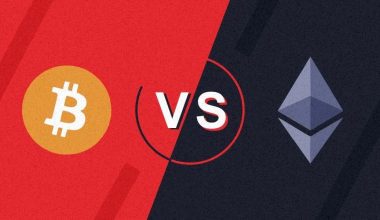The ideal investment plan will balance profitability and risk in a reasonable manner. Fortunately, there are a few investments that have done well over time, with gold being the most well-known. However, understanding how to invest in gold might not be at the top of your list of priorities. This investment approach may appear sophisticated, time-consuming, and perhaps out of date. Gold, though, may be a terrific addition to your investment portfolio with the correct amount of study, especially now. To find out the best ways of investing in gold, its disadvantages, and how to get started right away, keep reading.
Investing in Gold
The historical connection between gold and the value of our currency is a major factor in the value of gold. Due to its malleability, gold was utilized for coinage and jewelry in the past. The notes were made to match the precise weight of gold once paper currencies were created. Even if this is no longer the case, gold continues to be valuable due to its historical significance in our financial system.
The Motley Fool estimates that jewelry accounts for roughly half of the current global demand for gold. The demand for real gold investments, such as coins and gold bars, is another 40%. For these uses, physical gold is bought by both investors and financial institutions, as well as, more recently, by exchange-traded funds that acquire gold for investors. The remaining demand for gold mainly comes from the medical and technology sectors.
Is Investing in Gold Good
For those wishing to diversify their current portfolios, gold is a fantastic investment. Traditionally held investments like equities and bonds typically perform better than gold. Gold’s value often rises when certain assets perform poorly. This tendency has made many investors believe that gold is a secure investment, further emphasizing the value of including gold in a broad portfolio. Here are some advantages to consider if you’re considering investing in gold.
#1. Gold is Regarded as an Inflation Hedge.
Gold and other rare metals have traditionally been regarded as shrewd inflation hedges. That’s because, despite changes in the value of the dollar, it usually maintains its value over time and keeps your purchasing power.
#2. With Gold, you Can Diversify your Investment Portfolio.
The stock market also declines into a recession when the economy does. During a recession, real estate assets may also lose value. Gold can be an excellent method to ensure a broad portfolio in tough economic times. Your exposure to these riskier assets is typically reduced through diversification, which also lessens the severity of any losses.
#3. Gold Facilitates Liquidity.
Liquidity, or the ability to quickly sell assets for cash, is crucial during a recession. Then, if financial hardship strikes, you can liquidate those assets and continue to pay your bills and other essential expenses. The majority of the time, illiquid investments are those that include stocks, bonds, real estate, antiques, and other tangible assets. It’s challenging to convert them into usable money, especially when there’s less demand for such things. Contrarily, gold is relatively liquid and can be converted into cash very quickly, making it a wise investment during downturns.
#4. Good for Some People but Bad for Others
Some people choose to invest in gold, but not everyone should. For instance, gold is generally not for you if your top priority is to maximize the growth of your money. Generally speaking, gold is viewed as a low-risk, safe-haven investment that does not provide large returns. Consult with a financial planner or investment advisor if you’re unsure whether investing in gold is the best course for your finances or if you need assistance making a purchase. They can assist you in making the best decision for your financial objectives.
Best Way of Investing in Gold
Your resources and investment objectives will determine the best gold investment for your portfolio. When investing in gold, the majority of individuals first consider jewelry or possibly gold coins. In fact, there are many methods for buying and selling gold. Consider these top gold investment strategies:
#1. Gold Bullions
Any kind of pure gold is referred to as “bullion,” with gold bars serving as the most prevalent example. For security purposes, gold bars often have a serial number affixed and must be certified for weight and purity. The size of gold bars can vary, and it doesn’t require many to be valued. Buying gold bullion has some disadvantages because you usually need to secure the investment with insurance and a safe location. Furthermore, finding customers who are prepared to buy in whatever bar size you have the asset in might be challenging when buying and selling gold bullion. Nevertheless, a lot of investors consider this approach to be one of the most profitable and effective ways to invest in gold.
#2. Gold Coins
The popularity of gold coins may be something you’ve heard about from infomercials and other ads. Due to their smaller size, this well-known method of purchasing and selling gold is frequently more practical than gold bars. Investors can buy gold coins from dealers or collectors, then sell them for a profit later. Most cities have dealers, so finding gold coins is simple. One of the finest ways to invest in gold for novices due to ease of purchase is gold coins.
#3. Gold Jewelry
Even though you might not recognize it as such, gold jewelry is most likely the type of gold investment that is bought and sold the most frequently. Gold jewelry is actually quite user-friendly for beginners because it is so simple to get. Approximately 49% of the world’s gold production, according to Investopedia, is utilized to manufacture jewelry. Any piece of jewelry that is 14 karat gold or greater is typically regarded as a gold investment. There are some disadvantages to take into account, despite how straightforward it is to purchase. Gold occasionally has a dubious resale value. This indicates that finding a customer and selling your jewelry for a profit can be challenging.
#4. Gold ETFs & Mutual Funds
Mutual funds and gold exchange-traded funds (ETFs) are types of accounts that buy gold on an investor’s behalf. These funds’ shares, which each represent a certain amount of gold, can be bought and sold just like stocks. One of the best methods to invest in gold is through ETFs and mutual funds, which let investors trade the precious metal without having to worry about security or gold insurance expenses. When compared to the administration of other assets, the costs involved with buying and selling gold through ETFs or mutual funds are frequently significantly lower.
#5. Gold Futures
In plain English, gold futures are agreements to buy and sell gold at a specific time. Each contract represents a precise quantity of gold, and depending on the terms, it may pay out in cash or in actual gold. This method is most suitable for investors with the capital to buy high-valued contracts because gold futures can be extremely substantial. Investors now have the choice to buy a futures contract at a predetermined price and delivery date. Options can help buyers increase the return on their initial investment, but in order to completely possess an option, they must pay the price of the underlying gold.
#6. Gold Mining Companies & Stocks
An intriguing option to mix gold investments with conventional stocks is to invest in gold mining firms. Investors can gain access to the earnings of gold without ever buying or selling any by purchasing shares in a business that deals with the metal. As there are other business elements at play that can assist insulate investors from flat or dropping gold prices, this type of investing can also offer lesser risks. In light of this, investors do extensive research to choose the best firm to invest in.
#7. Streaming & Royalty Companies
Investing in gold through stocks can also be done through streaming and royalty businesses. In exchange for the opportunity to purchase gold (or other commodities) in the future, these businesses will pay mining corporations in advance. Consider them to be financial institutions that receive their profits in gold. The hazards linked with gold mining and the firms involved must also be thoroughly researched by innovators before making this type of investment. Some people may find it difficult to enter the market due to the amount of study necessary to invest in streaming and royalties businesses.
Disadvantages of Investing in Gold
Talking about some disadvantages of investing in Gold, let us look at some points below:
#1. High Manufacturing Costs
You must pay extremely high making costs, particularly if you choose exotic patterns. The making costs vary depending on the design but are often close to Rs 200 per gram. This amounts to a 10% markup when taking into account the current price of jewelry-grade 22-carat gold. Keep in mind that if investors choose to sell the jewelry, they will never be able to recoup these expenses.
#2. Physical Storage Issues
Lack of investment in gold is a result of improper handling, storage, and treatment. Large-scale gold storage is both expensive and hazardous. However, there are options for investing in gold that take the form of a certificate or an account where the owner doesn’t actually hold the gold but can still represent it in the future. Even though there are currently well-established methods for investing in gold, some people could still be unsure of their continued dependability in the event of a system failure. Additionally, oxidation and browning may occur even when wrapped in a protective cover for poor storage.
#3. No Leverage or Financing
You must have all of the money necessary to complete the transaction when making a gold investment. For this kind of investment or purchase, you cannot use any kind of financing or leverage. The number of persons who can participate in the market may be significantly constrained as a result.
#4. Consignable to Confinement
The possibility of confiscation is among the major hazards associated with gold investments. If the government decides it is necessary, they could enter the warehouse and seize all of the gold within. In that situation, there is nothing you can do to prevent it, and your money will be lost.
#5. The Real Return is Lower Than the Nominal Return
If the price of gold does rise, the increase will only be nominal and not result in a real rise in purchasing power. This is so because while gold increases, paper money often devalues at the same time. These gold gains are also taxed.
#6. Partially Liquid
The terrible social aspect of liquidity in most families is that gold has sentimental value and is the last object to be sold in times of financial stress. This completely defeats the idea of using gold as a liquid asset.
#7. Impurity
Another issue that arises with jewelry is the quality of the gold. The majority of the time, it might not be at the level being touted. Despite the fact that ‘hallmarking’ is widely used, this issue has not been fully remedied. There are issues with the hallmarked jewelry as well, as only a small portion of the gold jewelry submitted for examination is tested by the hallmarking agencies.
#8. Less Resale Value
Few jewelers are willing to pay in cash and the majority are willing to swap the gold they have sold at market value. If you want hard cash, the majority of them take 5–10% off the value. If you attempt to sell gold that you have previously purchased from another jeweler, the deduction is larger. This is because he will reduce the amount he pays you and question the purity of the gold, saying it is suspect.
#9. Zero Recurring Income
Unlike investments in stocks or real estate, where investors can benefit from their investment without having to sell their assets, gold investments do not offer any present income like dividends or rental payments.
#10. No Tax Advantage
Unlike other market-available tax-saving devices, investing in gold won’t give you any sort of tax advantage.
How Much Money Should I Invest in Gold?
Investors should often save 5% to 10% or less of their portfolios for alternative assets, such as gold.
Should Beginners Invest in Gold?
Gold jewelry is actually quite user-friendly for beginners because it is so simple to get.
Can You Become a Millionaire by Investing in Gold?
The answer is unquestionably yes! Inflation hedging, recession protection, and greater returns are all made possible by gold. Vaulted fills that need by making investing in gold easier and more widely available.
What Is the Cheapest Way to Invest in Gold?
As a result of not having to pay storage or transportation costs, investing in traditional securities like stocks and exchange-traded funds might be cheaper than purchasing physical bullion.
Related Posts
- HOW TO BUY GOLD Bars, Stocks & Coins in 2023 (Detailed Guide)
- GOLD AS A FINANCIAL INVESTMENT: 4 Things To Know
- HOW TO BUY GOLD AND SILVER Safely in 2023: Beginners Guide
- GOLD IRA: Best Gold IRA Companies for 2023






